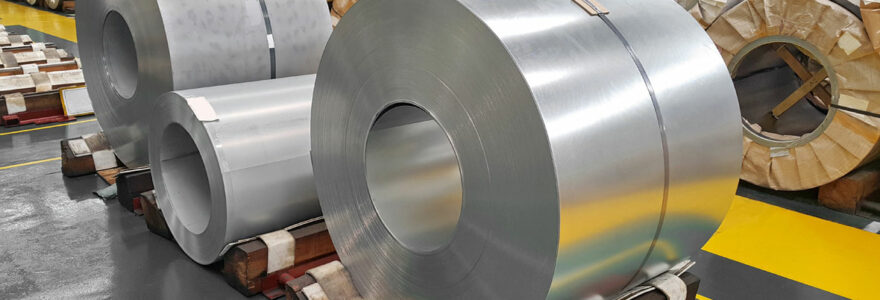Peeling back the layers of the enigmatic world of coil coating, one stumbles upon an intersection where science and industry meet. This realm, often untapped by the layman, holds the secret to the delicate balance between aesthetics and functionality in various products. Coil coating plays an integral part in augmenting both appearance and performance. Delving deeper, one finds an array of chemical compounds, each contributing to the overall property of coil coatings. Furthermore, the intricate coil coating processes significantly affect performance, with each stage of the process playing a definitive role. Beyond its application on metal surfaces, coil coating has found favor in a plethora of industries due to its wide-ranging benefits.
Coil Coating's Role in Enhancing Functionality and Appearance
Coil coating, a sophisticated process in the manufacturing sector, significantly enhances both the functionality and appearance of products. This process involves applying a coating, usually a paint, varnish, or a plastic layer, onto a coil of metal. Primarily used on steel or aluminum substrates, coil coating provides a durable and high-quality finish to products. This innovative method offers numerous benefits, one of which is improved product appearance. By creating a uniform layer of color and gloss, coil coatings grant products an aesthetically pleasing look.
Exploring the Chemical Compounds in Coil Coatings
As the foundation of coil coating, chemical compounds play a pivotal role. A myriad of compounds are used, each contributing to the functionality and aesthetics of the coating. Starting with resins, which form the backbone of the coating structure: the two most commonly utilized are polyester and Polyvinylidene fluoride (PVDF), chosen for their exceptional mechanical properties and durability.
Next, bisphenol (BPA), a compound used to improve the flexibility and toughness of the coating. Despite some concerns about its potential health effects, it remains a popular choice due to its remarkable performance.
However, the story of coil coatings wouldn't be complete without acknowledging the role of additives. These minor but essential components are responsible for enhancing certain properties:
Pigments: These provide the coating with its color and opacity, while also contributing to its UV resistance.
Solvents: These facilitate the application of the coating by keeping it in a liquid state until it's ready to be cured.
Curing agents: These initiate the chemical reaction that turns the liquid coating into a solid, durable film.
The combination of these compounds results in coil coatings that are not just visually appealing but also capable of withstanding the harshest of conditions. And so, the science behind coil coating continues to evolve, consistently delivering improved performance and enhanced appearance.
Coil Coating Processes and Their Impact on Performance
Understanding the science behind coil coating is vital to enhancing its functionality and appearance. Coil coating is a process that involves applying a coat of paint onto a metal strip in a continuous and automated process.
Analyzing Key Steps in the Coil Coating Process
The process begins with the uncoiling of a metal strip. The strip is cleaned and chemically treated. A coat of paint is then applied and cured using high heat. During this process, the temperature, exposure time, and other conditions need to be precisely controlled to achieve the desired coating characteristics.
Role of Coil Coating in Performance Enhancement
Coil coating plays a significant role in enhancing the performance of the metal strip. It provides a uniform and durable finish, offering excellent resistance against corrosion. Additionally, it allows for cool temperature flexibility and high temperature stability, making it suitable for various applications.
Impact of Coil Coating Processes on Metal Surfaces
Coil coating processes can significantly impact the performance of metal surfaces. The coating protects the metal from environmental exposures, increasing its lifespan. It also improves the metal's aesthetic appeal, offering a wide range of colors and finishes.
Applications and Use Cases in Various Industries
Coil coating, a highly efficient method of coating metal, is a rising trend across several industries due to its superior durability and aesthetic appeal. Coil coating finds diverse applications across sectors such as building and construction, food and beverage, among others. For instance, in the building industry, pre-coated metal is used extensively in exterior building products like wall panels and roofing, offering enhanced resistance to weathering and UV radiation. Similarly, in the food and beverage industry, coil coated metal is the choice of material for beverage cans due to its excellent substrate adhesion, corrosion resistance and ability to withstand contact with liquids.
One of the fascinating aspects of coil coating is the process itself. The material is cleaned, pre-treated, primed, and finally painted, all while still in a coiled form. A method that lends itself well to automation, it ensures a uniform film thickness and finish. An instructive video detailing the coil coating process can be found , providing a comprehensive understanding of its application across different industries.
Engaging in a digital dialogue has proved beneficial in disseminating information about coil coatings. A recent interactive webinar allowed participants to delve into the specifics of coil coating application in their respective industries. To stay updated on the latest innovations and trends in coil coating, consider subscribing to a regular newsletter. Insights from these sources affirm the ever-evolving nature of coil coating and its growing significance in various industries.
